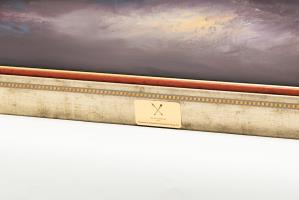O-7614 • painting • Trinidad & Tobago Dancers
Search the collection
Specifications
| Artists | Kerry Anthony Collins (Artist) |
|---|---|
| Date | 2007 |
| Signature | K. COLLINS 07 |
| Inscriptions |
With the compliments of the Parliament of the Republic of Trinidad and Tobago, W.I.
|
| Materials | paint, oil |
| Support | canvas |
| Dimensions (cm) | 103.0 (Width) • 80.0 (Height) • 4.0 (Thickness) |
| Functions | Art |
| Barcode | 602907 |

